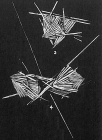WoRMS taxon details
Aggerostramen Loeblich & Tappan, 1985
723121 (urn:lsid:marinespecies.org:taxname:723121)
accepted
Genus
Psammosphaera rustica Heron-Allen & Earland, 1912 accepted as Aggerostramen rustica (Heron-Allen & Earland, 1912) (type by original designation)
marine, fresh, terrestrial
neuter
Loeblich, A. R.; Tappan, H. (1985). Some new and redefined genera and families of agglutinated foraminifera; I. <em>The Journal of Foraminiferal Research.</em> 15(2): 91-104., available online at https://doi.org/10.2113/gsjfr.15.2.91
page(s): p. 91 [details] Available for editors [request]
[request]
page(s): p. 91 [details] Available for editors
Hayward, B.W.; Le Coze, F.; Vachard, D.; Gross, O. (2024). World Foraminifera Database. Aggerostramen Loeblich & Tappan, 1985. Accessed through: World Register of Marine Species at: https://www.marinespecies.org/aphia.php?p=taxdetails&id=723121 on 2024-11-20
Date
action
by
![]() The webpage text is licensed under a Creative Commons Attribution 4.0 License
The webpage text is licensed under a Creative Commons Attribution 4.0 License
original description
Loeblich, A. R.; Tappan, H. (1985). Some new and redefined genera and families of agglutinated foraminifera; I. <em>The Journal of Foraminiferal Research.</em> 15(2): 91-104., available online at https://doi.org/10.2113/gsjfr.15.2.91
page(s): p. 91 [details] Available for editors [request]
[request]
page(s): p. 91 [details] Available for editors
From editor or global species database
Diagnosis Test in the early stage with a few angular, tetrahedral, or conical chambers attached to other foraminifers, later chambers are less angular and may be rounded or fusiform, and the test may lie free on the substrate, early chambers may be closely appressed and form a straight uniserial series but later are somewhat irregular in arrangement and interconnected by distinct tubular stolons, up to five such stolons may project from an individual chamber and result in an irregularly branching test; wall consisting largely of a pavement of sponge spicules aligned in parallel groups or with smaller grains of quartz in the interstices, commonly with some long spicules that project beyond the chamber itself and may connect to adjacent chambers or to the substrate; aperture in the early stage a simple opening, in the later chambers at the end of the stolonlike necks. Holocene; Atlantic; Caribbean. (Loeblich & Tappan, 1987, Foraminiferal Genera and Their Classification) [details]


